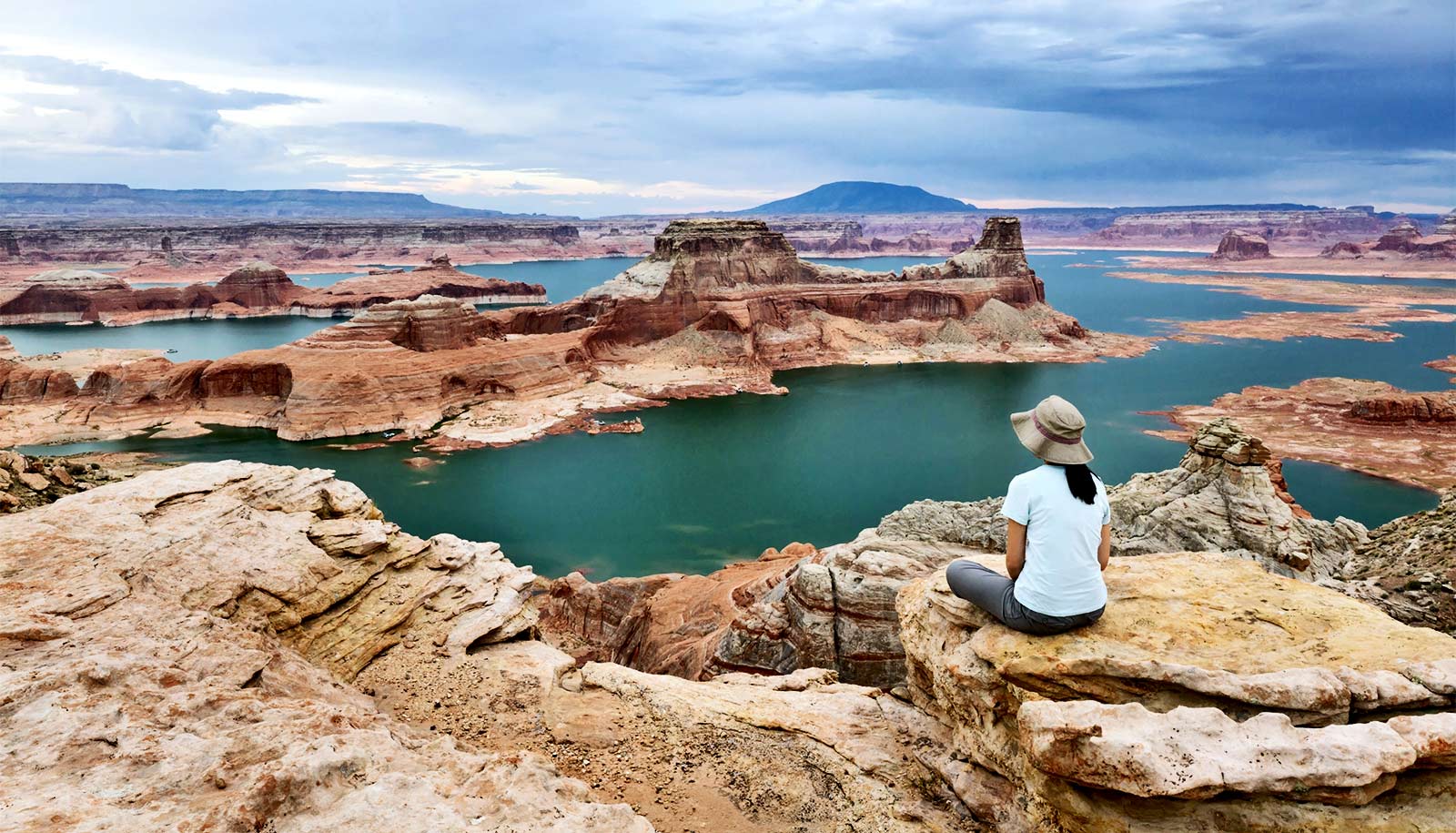
Even under modest climate change scenarios, the continental United States faces a significant loss of groundwater, a new study shows.
The study estimates that the US could lose about 119 million cubic meters of water (more than 4.2 billion cubic feet)—roughly enough to fill Lake Powell, the largest reservoir in the Upper Colorado basin, four times.

The results in Nature Communications show that as warming temperatures shift the balance between water supply and demand, shallow groundwater storage can buffer plant water stress—but only where shallow groundwater connections are present, and not indefinitely. As warming persists, that storage can be depleted—at the expense of vital connections between surface water, such as rivers, streams, and water reservoirs underground.
“We are facing a crisis in global groundwater storage.”
“Even with a 1.5 degrees Celsius [2.7 degrees F] warming case, we’re likely to lose a lot of groundwater,” says coauthor Reed Maxwell, professor of hydrology at the Colorado School of Mines.
“The East Coast could start looking like the West Coast from a water standpoint. That’s going to be a real challenge.”
Groundwater and climate change models
Most global circulation models don’t take into account the lateral movement of water in the subsurface. Typically, they only include limited up-and-down movement, such as rain percolating from vegetation into the soil and roots pulling up water from the ground. In addition, these models tend to limit their scope to mere meters above or below ground.
This new study goes beyond that to simulate how water moves in the subsurface and connects with the land surface.
“We asked what would the response look like if we included the entire complexity of subsurface water movement in a large-scale simulation, and we think this is the first time this has been done,” says lead author Laura Condon, assistant professor of hydrology and atmospheric sciences at the University of Arizona.
The calculations revealed a direct response of shallow groundwater storage to warming that demonstrates the strong and early effect that even low to moderate warming may have on groundwater storage and evapotranspiration.
Tipping point
In the western US, changes in groundwater storage may remain masked for a long time, the study revealed, because the groundwater there is already deep, and dropping levels would not have as great an effect on surface waters. Additionally, the region’s vegetation is already largely water limited and adapted to being disconnected from deep groundwater sources.
However, the eastern US will be much more sensitive to a lowering of the water table. Groundwater and surface water are more closely linked, and depleting the groundwater will be more disruptive to vegetation, streams, and rivers. Many of the systems that have been put in place in the western US for handling and managing water shortage are lacking in the eastern part of the country, as well.
The study reveals that regions in the eastern US may reach a tipping point sooner rather than later, when vegetation starts to lose access to shallow groundwater as storage is depleted with warming.
“Initially, plants might not be experiencing stress because they still have existing shallow groundwater available, but as we continue to have warmer conditions, they can compensate less and less, and changes are more dramatic each year,” Condon says. “In other words, shallow groundwater is buffering the response to warming, but when it’s depleted, it can’t do that anymore.”
The study’s simulations were set up to keep precipitation patterns the same and only increase atmospheric temperatures according to projections ranging from 1.5 to 4 degrees Celsius. Even with a modest 1.5 degrees Celsius of warming, the researchers projected a loss of 119 million cubic meters of storage. At 4 degrees Celsius [7.2 degrees F], they projected groundwater losses at 324 million cubic meters—roughly 10 times the volume of Lake Powell or enough to fill nearly three-quarters of Lake Erie.
“We are facing a crisis in global groundwater storage,” Condon says. “Huge groundwater reservoirs are drying up at an alarming rate, and that’s a problem because they nourish major growing regions around the world.”
Source: University of Arizona
The post West Coast water trouble will head east appeared first on Futurity.
from Futurity https://ift.tt/37Biqhu
No comments:
Post a Comment